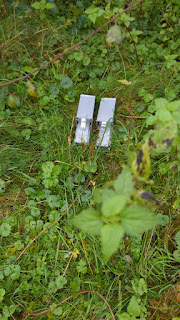Tweet Tweet
The other evening, I joined a walk around UEA campus and Earlham Marshes with the Conservation and Wildlife Society to listen to the evening chorus. Birds sing for several reasons, such as to attract a mate, or to declare and defend a territory. For these reasons, birdsong tends to peak around the spring months at the start of the breeding season, when male birds are trying to establish a breeding territory and find a female to mate with. Similarly, while birdsong may be heard all day, there are certain peak times to hear their beautiful singing - the morning and evening. While the dawn chorus is famous for its rich cacophony of birdsong, the evening chorus is quieter and less well-known but equally interesting to listen out for some fabulous avian singers. Here are some of the birds we heard (and some pictures of the sunset!):
- Sedge Warbler (Acrococephalus schoenobaenus): This streaky, summering warbler has a noisy rambling warble, less rhythmic than the reed warbler.
- Cetti's Warbler (Cettia cetti): A resident warbler, this small and shy bird has a surprisingly loud voice, bursting out of reedbeds.
- Grasshopper Warbler (Locustella naevia): Yet another warbler, unsurprisingly this species high-pitched, reeling song sounds like its namesake insect.
- Blackcap (Sylvia atricapilla): This warbler, increasingly overwintering in the UK, is nicknamed the 'northern nightingale' for its beautiful, fluty song, rivalling that of the UK's greatest songster.
- Chiffchaff (Phylloscopus collybita): The final warbler species we heard, this leaf warbler is almost indistinguishable from willow warblers, except for its namesake 'chiff-chaff' song.
- Blackbird (Turdus merula): This common garden species, has a rich, mellow, fluty song, one of the nicest of any UK bird.
- Robin (Erithacus rubecula): Another garden favourite, robins sing almost all year, as well as at night thanks to the light from streetlamps, with a whistled, wistful tune.
- Wren (Troglodytes troglodytes): This tiny, brown bird, like the Cetti's warbler, has an unexpectedly powerful voice, a loud rapid song full of trilling.
All these species are passerines, often called the songbirds, due to their habit for producing beautiful birdsong. But other bird species are capable of producing some other really interesting vocalisations which we also heard the other night:
- Rook (Corvus frugilegus): This is a raucous corvid, making distinctive cawing calls, especially noisy when heard together at a large rookery.
- Little owl (Athene noctua): This introduced owl, more diurnal than other owls, has a short 'woop woop' and a sharper 'kiew kiew' call, as well as softer contact calls.
- Green woodpecker (Picus viridis): This woodpecker has a distinctive, loud call called a 'yaffle', which sounds like its laughing at you.
These birds just scratch the surface of the wide variety of noisy neighbours we have living, and singing, alongside us, giving us a wonderful wake-up call every dawn, and a lovely lullaby at dusk!
- Rook (Corvus frugilegus): This is a raucous corvid, making distinctive cawing calls, especially noisy when heard together at a large rookery.
- Little owl (Athene noctua): This introduced owl, more diurnal than other owls, has a short 'woop woop' and a sharper 'kiew kiew' call, as well as softer contact calls.
- Green woodpecker (Picus viridis): This woodpecker has a distinctive, loud call called a 'yaffle', which sounds like its laughing at you.
These birds just scratch the surface of the wide variety of noisy neighbours we have living, and singing, alongside us, giving us a wonderful wake-up call every dawn, and a lovely lullaby at dusk!





Comments
Post a Comment